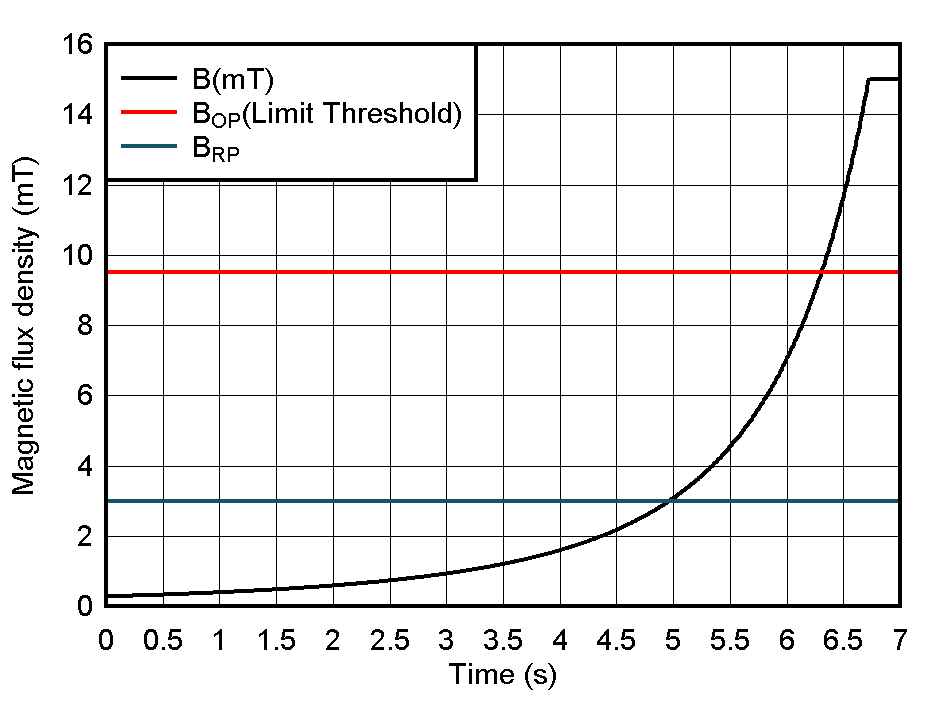SBOA514A March 2021 – August 2021 DRV5032 , TMAG5170 , TMAG5231 , TMAG5273
4 End-of-travel detection
End-of-travel detection
Hall position sensors can also be used to detect an end-of-travel event for a moving component within a system. Diagnosing when a moving component has moved beyond its intended range of movement is a typical use-case for end-of-travel detection. Example applications for this include the sliding door modules, window modules, roof motor modules, and wiper modules in cars. In this scenario, an axially magnetized cylinder magnet can be placed on the moving component so that it moves with it. For this application, the direction of motion would be opposite to the direction of motion in Figure 3-1 since the magnet will be approaching the sensor instead of moving away from it. A Hall switch can then be used to detect whenever the component and magnet are close enough to the Hall switch. As the magnet gets closer to the switch, the sensed magnetic flux density increases until it increases beyond the magnetic limit. This magnetic limit is set by BOP of the Hall switch. Once the sensed magnetic flux density exceeds the BOP, the state of the Hall switch changes and the system is alerted of this end-of-travel event. The Hall position sensor should be selected so that its BOP would equal the resulting magnetic flux density when the magnet-to-sensor distance is at the desired distance threshold. Figure 4-1 shows the relationship between BOP and the limit threshold for the scenario where the end-of-travel state has been detected.
 Figure 4-1 Magnetic Flux Density for End-of-Travel Detection
Figure 4-1 Magnetic Flux Density for End-of-Travel Detection